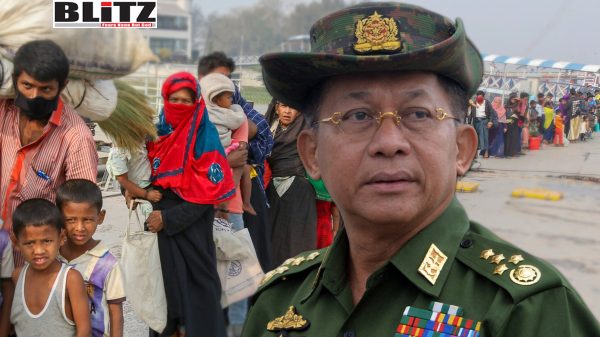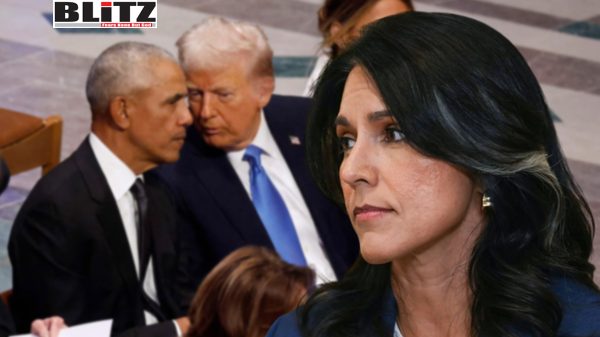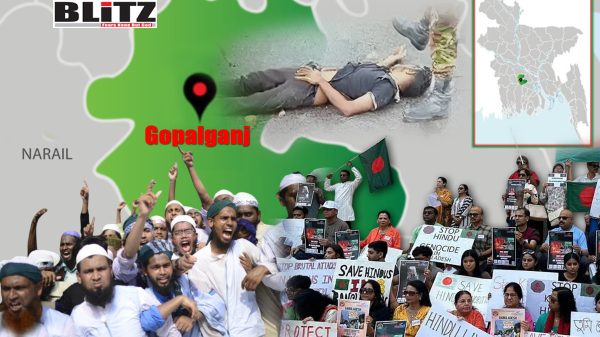The dragon in the backyard: China’s strategic penetration of South Asia
- Update Time : Tuesday, July 22, 2025

China’s growing influence is reshaping South Asia’s balance of power. India’s traditional strengths endure, but without a bold response, its regional role may erode.
As South Asia emerges as a central arena of geopolitical rivalry, India’s longstanding regional primacy is facing unprecedented challenges. Over the past two decades, China has steadily and systematically expanded its presence across the region—leveraging infrastructure investments, debt-diplomacy, military partnerships, and diplomatic maneuvers to reshape the strategic landscape. From Pakistan to Bangladesh, and increasingly in other neighboring states, Beijing has embedded itself deeply into national policies and strategic calculations.
While India retains key advantages in size, geography, capability, and regional goodwill, China’s assertive engagement is rapidly narrowing New Delhi’s strategic options and complicating its ability to shape outcomes in its immediate neighborhood.
At the core of China’s regional strategy lies its use of economic tools to foster dependency. The Belt and Road Initiative (BRI), touted as a global infrastructure project, is in reality a vehicle for geopolitical gain. China offers soft loans to economically struggling nations, which may appear attractive in the short term compared to the conditionalities imposed by international financial institutions like the IMF or World Bank. However, these loans often lack transparency and sustainability, leading to long-term dependency.
Pakistan is a textbook case. Heavily reliant on Chinese arms and loans, it has effectively become a vassal state. Over 80% of its military hardware is sourced from China—according to SIPRI, 81% of Pakistan’s arms imports between 2019 and 2023 came from China. World Bank estimates suggest Pakistan owes China around $28 billion, with repayments expected to stretch across four decades, and over 40% of its export earnings going toward debt servicing. The China–Pakistan Economic Corridor (CPEC), though strategically vital for China, has yielded little economic return for Islamabad and continues to face serious security threats.
Gwadar, often touted as the flagship of CPEC, has become what one local cynically described as “a place where no jets fly and no ships come.” The new Gwadar International Airport, completed with Chinese funding, remains largely non-operational. As one analyst put it, “This airport is not for Pakistan or Gwadar. It is for China, so they can have secure access for their citizens to Gwadar and Balochistan.”
Bangladesh appears to be following a similar trajectory. China’s loans to Bangladesh are estimated at over $ 6.1 billion, mostly tied to Belt and Road Initiative (BRI) projects such as the Padma Bridge Rail Link, Payra Port, the Karnaphuli Tunnel in Chittagong, the Dhaka–Ashulia Elevated Expressway, and various coal and power projects. As Bangladesh grapples with internal unrest and economic slowdown—exacerbated after the fall of the Hasina government in August 2024—China has stepped in with promises of concessional loans and extended repayment timelines. These gestures, however, come with strings attached. China recently agreed to reduce interest rates on its loans to Bangladesh and extend the repayment period from 10 to 30 years. While this move may appear generous, it deepens Dhaka’s dependency on Beijing.
Most recently, during a high-level visit in 2025, China pledged an additional $2.1 billion in investments and loans for infrastructure and industrial zones. As of mid-2025, Bangladesh’s outstanding debt to China stood at around $3.31 billion—just over 3% of its total external debt of $104.8 billion—raising continued concerns about long-term economic sustainability, strategic vulnerability, and shrinking policy autonomy. Under the interim government led by Muhammad Yunus, Bangladesh has not only distanced itself from New Delhi but has also embraced closer ties with China and Pakistan.
China’s strategy in South Asia has evolved beyond economic leverage into an active effort to forge military and diplomatic alignments that counter India’s regional primacy. At the heart of this new convergence is a reinvigorated defense partnership between Pakistan and Bangladesh—a development with clear strategic undertones.
After more than a decade of disengagement, Bangladesh’s participation in Pakistan’s “Aman 2025” naval exercise marked a significant departure from its earlier posture. Even more alarming were confirmed reports from late 2024 that Dhaka had procured 40,000 rounds of artillery ammunition, 2,000 tank shells, and 40 tonnes of RDX from Islamabad. According to Pakistan’s Inter-Services Public Relations (ISPR), Bangladesh has also “expressed profound interest” in acquiring advanced platforms, particularly the JF-17 Thunder fighter jets. One South Asian defense analyst summed it up aptly: “This is not just about arms transfers. It’s about Dhaka signaling a tilt in its strategic orientation.”
The broader context of this shift reveals China’s central role. The era of strategic concealment is over. As a senior Chinese diplomat recently declared, “A big country should act like a big country—it cannot hide its capacities and bide its time as it had in the past.” Emboldened by its growing influence, Beijing is now actively shaping outcomes across the region.
Moreover, the trilateral summit held in Kunming on June 19, 2025, between China, Pakistan, and Bangladesh—openly aimed at creating an alternative to SAARC, long seen as an India-led grouping—further cements this emerging strategic axis. This development closely follows an earlier trilateral engagement between China, Pakistan, and Afghanistan in May 2025, where Beijing played a central role in mediating tensions between Kabul and Islamabad. Beyond conflict resolution, the meeting also expanded China’s Belt and Road footprint into Afghanistan, signaling a calculated effort to consolidate influence in India’s extended neighborhood.
The strategic intent behind both trilateral is unmistakable—China is actively working to sideline India through parallel regional architectures and deeper security linkages. As India Today described the Kunming summit, it “formalized India’s worst strategic nightmare,” sending a clear message of coordinated resistance to New Delhi’s traditional sphere of influence. The growing involvement of Turkey, which has deepened ties with both Islamabad and Dhaka, adds yet another layer to this challenge. As The Economic Times noted, Ankara’s posture is “aimed at targeting India”—with China orchestrating this convergence from behind the scenes.
China is also actively challenging India in its maritime backyard—the Indian Ocean Region. In Sri Lanka, the Hambantota port, leased to China for 99 years, has become emblematic of debt-trap diplomacy. Despite concerns over its viability, China proceeded with the port project not for economic returns, but to secure strategic leverage.
In Bangladesh, reports have surfaced about a potential Chinese-backed revival of a dormant airbase in Lalmonirhat—just 20 kilometers from the Siliguri Corridor, the narrow “chicken’s neck” connecting India’s northeast with the rest of the country. As The Economic Times reported, “China is aiding the revival of a World War II-era airbase in Lalmonirhat, dangerously close to India’s strategic Siliguri Corridor.” Geostrategist Brahma Chellaney noted, “An active Lalmonirhat airbase would greatly enhance China’s ability to conduct aerial surveillance… including in India’s strategically vital Siliguri Corridor.” Bangladesh’s assertion that it is “the only guardian of the ocean for all this region”, through which India’s northeastern states—the “seven sisters”—access the sea, reflects a troubling sign of Chinese influence over Dhaka’s strategic posture.
In Myanmar, China has deepened its support for the military junta, securing its interests through the China-Myanmar Economic Corridor. This proximity gives Beijing potential leverage over the India-Myanmar border, which could be used to foment unrest in India’s northeast.
In Nepal, China has played a key role in engineering political coalitions, notably encouraging the unification of leftist forces, which has sidelined India-friendly parties in the past. It remains among Nepal’s top sources of FDI and is actively involved in infrastructure projects, including hydropower and transport corridors. In Bhutan, although the country has traditionally aligned closely with India, recent developments—such as Chinese infrastructure activity near disputed border areas and signs of engagement on boundary talks—indicate a cautious shift that could eventually open space for Chinese inroads.
The Maldives under President Muizzu initially leaned toward Beijing—starting with the “India Out” campaign—but has there after sought to balance its foreign policy with a more cooperative stance towards India. Despite this recalibration, China’s growing infrastructure footprint—through projects like the Sinamalé Bridge and other BRI-linked developments—remains a strategic concern for New Delhi.
Sri Lanka, after its economic collapse, turned to India for urgent assistance while China delayed debt restructuring support. However, Beijing still retains considerable influence through legacy BRI projects. Any shift in Colombo’s political landscape could quickly reignite Chinese leverage.
China’s overarching objective is clear: to erode India’s strategic autonomy in its own neighbourhood and undermine its regional leadership. Moreover, Chinese engagement promotes authoritarian political systems and military rule in the region, as Beijing finds it easier to deal with such regimes—where decision-making often prioritizes Chinese interests over democratic accountability. Authoritarianism allows for swift decision-making without accountability, which benefits Beijing, as it prefers to keep the terms of its agreements secret and pursue its interests without public scrutiny. Unlike the IMF or World Bank, which demand governance reforms and transparency, China’s loans come with minimal scrutiny or conditionality—an attractive proposition for regimes seeking to avoid internal criticism.
But these partnerships are not developmental in nature. They are extractive, secretive, and often leave recipient nations worse off. Over time, as repayments become due and projects fail to generate returns, these nations fall deeper into Beijing’s grip.
Conclusion
India is navigating a more contested South Asian geopolitical landscape than ever before. What were once bilateral frictions with neighbors like Pakistan and Bangladesh have evolved into a broader strategic contest, with China at the center. India’s room for maneuvers has narrowed, and regional diplomacy has become increasingly complex. The region is no longer shaped solely by history, culture, or economics. Instead, China’s strategic ambition—manifested through debt-trap diplomacy, infrastructure penetration, and military outreach—is redrawing the map. Its growing presence in Sri Lanka, the Maldives, Nepal, and Bangladesh reflects this shift.
India still retains key advantages—cultural and historical ties, geographical proximity, regional primacy, people-to-people connections, development partnerships, and a robust democratic model. However, these assets alone are no longer sufficient in a region increasingly influenced by Beijing’s investments, coercive tactics, and assertive diplomacy.
India must respond with strategic clarity, deeper regional engagement, economic resilience, and active diplomacy. Through effective strategic communication, it must also help neighbors recognize that China’s influence often empowers corrupt elites, promotes authoritarian governance over democratic values, and lacks true developmental intent—unlike India’s inclusive, growth-focused approach. India remains the primary regional power in South Asia, but rising geopolitical pressures demand a more agile and forward-looking strategy to preserve and reinforce its leadership in the face of China’s expanding footprint.










